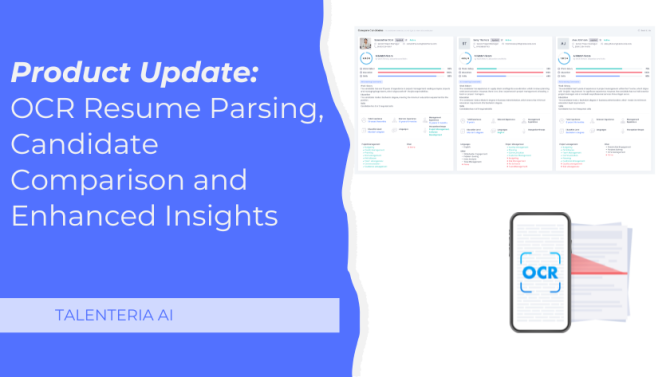
The assessment of others is an integral part of our life. When we meet people, our first impression about them, regardless of the degree of objectivity, can remain unchanged for a fairly long time. Although it is possible to go on with such an approach in daily socialization, things do not work this way in corporate communication.
Managers seeking workflow optimization must perform an objective assessment of the employees’ contribution to business development. That is why a professional rating scale is essential for leaders to avoid subjectivity. One of the most well-known assessment methods is BARS.
What Does the BARS System Entail?
The essence of the BARS method can be briefly described as follows:
- Identifying critical cases. The management has to describe specific situations of effective and ineffective performance of the employees’ duties, usually up to nine critical cases.
- Scaling the critical cases. The management has to rank the behavior described in each critical case - that is, to establish how effectively it reflects the performance of duties in the employee group in question.
- Development of the final tool. The critical cases are converted into performance parameters listed on a scale from “outstanding” to “unsatisfactory.”
The evaluation criteria may derive from various sources. For instance, they may be the result of the manager’s observation of the working process. This data is then converted into performance parameters.
In other cases, the basis of compiling a behavioral rating scale could be a survey of employees (possibly anonymous) regarding actual examples of their behavior in the workplace. The most frequently encountered examples will comprise the scale: from desirable to unacceptable. Further assessment involves ranking employees on this scale and the calculation of their points.
BARS sets a quality standard for a specific aspect of the work. Check for examples below!
Examples of the Behaviorally Anchored Rating Scale Approach
Every BARS segment is associated with a specific behavioral setting, described in the context of the performance level. By correlating the employee’s actions with a scale for each aspect, the evaluator can assess the worker’s performance more accurately.
Here is an example of a BARS assessment applicable to the customer service sphere.
Job Title: Sales Consultant at Home Appliances Store Aspect of Evaluation: Customer Service | |
5 | Competently and skillfully explains to the buyer the rules for using household appliances, describes the differences between the models, tells the conditions for obtaining a loan and warranty service for equipment, and remains polite even with irritated customers. |
4 | Explains to the buyer the rules for using household appliances, tells about the models’ differences, and explains the rules for obtaining a loan and warranty service for equipment, but prefers not to work with irritated customers, “passing” them to another seller. |
3 | Does limited to brief explanations of the rules for using household appliances, does not make the differences between the models explicit, and leaves inquiries about the conditions for receiving a loan or warranty to employees of other departments. |
| 2 | Communication with the client is limited only to the necessary pre-sale check of the product, does not give explanations, and refers them to other employees. |
| 1 | Does not tolerate annoyed customers, and can be rude to them. |
Behaviorally anchored rating scales vary depending on the job titles and tasks related to them. Here is an example of BARS that has more extensive gradation.
Job Title: Head of the production line Aspect of Evaluation: Adherence to the Schedule | |
9 | Creation of a detailed work schedule, its approval, and presentation to the employees are always performed on time. Always provides all the necessary documentation. |
8 | Draws up a plan, adjusts production operations in accordance with it, and, if necessary, changes the work schedule in a timely manner. |
7 | The emergence of small operational problems, their effective solution, and the correlation of all production operations are integrated with the work schedule. |
| 6 | Meets deadlines with rare deviations from the work schedule. |
| 5 | Determination and adjustment of the terms of work, delayed by unforeseen circumstances. |
| 4 | Drawing up an oral plan, lagging behind the schedule, frequent problems. |
| 3 | A poorly worked out plan with incorrectly defined and unrealistic terms of work. |
| 2 | Lack of a plan or schedule of work; no completion of the work tasks on time. |
| 1 | Permanent delay due to lack of plan and interest in work. |
Thus, the BARS system suits a variety of spheres. But how often should a manager implement it for the best results?
How to Measure BARS
There is no standard of the frequency of the BARS assessment. The general rule is that an average of 4-8 ratings should accumulate over the reporting period. Too few reviews will make the final score too dependent on one situation, while too many marks will make it too generalized.
For example, for monthly bonus systems, it is advisable to make a current assessment approximately once a week. With a quarterly bonus scheme, around 1-2 times a month is optimal. With an annual bonus, evaluation once a month should be sufficient.
What Are the Benefits of BARS?
Performing a periodic BARS system evaluation solves the main issue of other subjective assessment methods: the person being assessed during the reporting period may exhibit behavior related to more than one interval of the rating scale.
While developing BARS can be time-consuming, it has significant advantages:
- A more accurate assessment. People who know the job and the requirements for it are the best at developing BARS. The resulting BARS is an excellent way to measure performance at work.
- Clearer standards. Critical cases on the scale define what is meant by “very good” or “average” performance at work for both the management and the employees.
- Feedback. Critical cases are useful when providing feedback to the people being assessed.
- Consistency. The BARS assessment typically shows consistent and reliable results.
Receiving several different marks during a fixed period within the BARS management framework allows keeping a balanced account of all the employees’ achievements and shortcomings in the final assessment. Also, periodic behaviorally anchored rating scale BARS assessment solves the problem of selectivity of the evaluator’s memory, as most people remember best what happened the least long ago.
All in all, BARS is an efficient method of employee assessment used by professionals globally across various industries. It has proved itself to be a gold standard in work performance evaluation.





